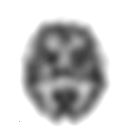
Photo from wikipedia
Intraoperative discrimination of thyroid and parathyroid tissues is fundamental in thyroid surgery. Recent fluorescence studies have shown stronger NIR emission in parathyroid tissue than in thyroid tissue, presenting a potential… Click to show full abstract
Intraoperative discrimination of thyroid and parathyroid tissues is fundamental in thyroid surgery. Recent fluorescence studies have shown stronger NIR emission in parathyroid tissue than in thyroid tissue, presenting a potential avenue for the development of a tool for surgical assistance. However, the fluorophore responsible for this emission has not yet been identified. In this work, spectroscopic analysis was performed to ascertain the origin of the emission peaks in parathyroid tissue. Ground-state diffuse reflectance (GSDR) absorption spectroscopy and laser-induced luminescence (LIL) emission spectroscopy were performed in parathyroid, thyroid, and fatty tissue samples and the resulting spectra were compared with the peaks of known fluorophores to identify the origin of each peak. The spectra of the different tissue types were also compared in order to evaluate the wavelength which presents the highest parathyroid emission relative to the emission of the surrounding tissues, representing the ideal wavelength for parathyroid detection. An emission peak in these conditions was observed for both thyroid and parathyroid tissue at 711 nm, with a higher intensity in parathyroid sample, making it suitable for detection applications. These results show a potential avenue for the development of a system allowing parathyroid detection in a surgical setting.
Journal Title: Journal of fluorescence
Year Published: 2021
Link to full text (if available)
Share on Social Media: Sign Up to like & get
recommendations!